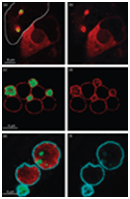For over 30 years, was the vaccine that can prevent pneumococcal infections safely - a serious infection caused by a bacterium known as pneumococcus
. But PPSV vaccine (pneumococcal polysaharydnoy) can not be used for part of the population who are most vulnerable to disease - children under 2 years. Without protection from the vaccine, infants and young children are at higher risk for several dangerous diseases, including bacterial and

. In 2000, however, FDA licensed PVC (pneumococcal) vaccine is safe and effective for use in children under 2. Here is information about two vaccines to help you make informed decisions to protect the health of their children, as well as their own. What is Pneumococcal disease? Pneumococcal disease is an infection caused by pneumococcus bacteria, or pneumococcus. People can be infected by bacteria, carrying her in the throat, and not hurt. But they can still spread it first drops the nose or mouth when they breathe or sneeze. Depending on what body or body part infected, Pneumococcal infection can cause any of buy strattera online several serious diseases, including:
Bacterial meningitis - infection covering the brain and spinal cord that can lead to confusion, and death as well as other physical effects such as blindness or paralysis. Pneumonia - infection of the lungs and total bacterial complications, average >> << that may, edema, insomnia, and irritability. Microbiemia - a dangerous blood infection. infections. There are more than 6000 deaths per year in the U.S. as a result of pneumococcal infection. More than half of these deaths in adults, as recommended by CDC, should have been vaccinated. In children under 5 years of infection by bacteria pneumococcus results about 480 cases of meningitis and 4,000 cases of bacteremia or other invasive infections per year. The main problem in infants is that the classic symptoms of meningitis and pneumonia, often absent, making the disease difficult to recognize. What pneumococcal vaccine safe? Both vaccines are safe. As with any medicine, there is always potential for serious problems, such as. But PVC (vaccine recommended for young children) and PPSV (vaccine for adults and older children), the risk of serious damage or death is extremely small. In studies involving nearly 60,000 doses of vaccine PCV, there was moderate or severe reactions. Minor side effects include:
redness, tenderness or swelling at the injection site for one of every four children. Fever higher than 100. 4 degrees about one out of every three children. Fever higher than 102. 2 degrees about one of every 50 children. Sometimes the incident nervousness, drowsiness, or loss of appetite. About one out of every two adults who get the vaccine PPSV experience redness or pain where the vaccine. Less than 1% have more severe reactions such as fever and muscle aches. .


